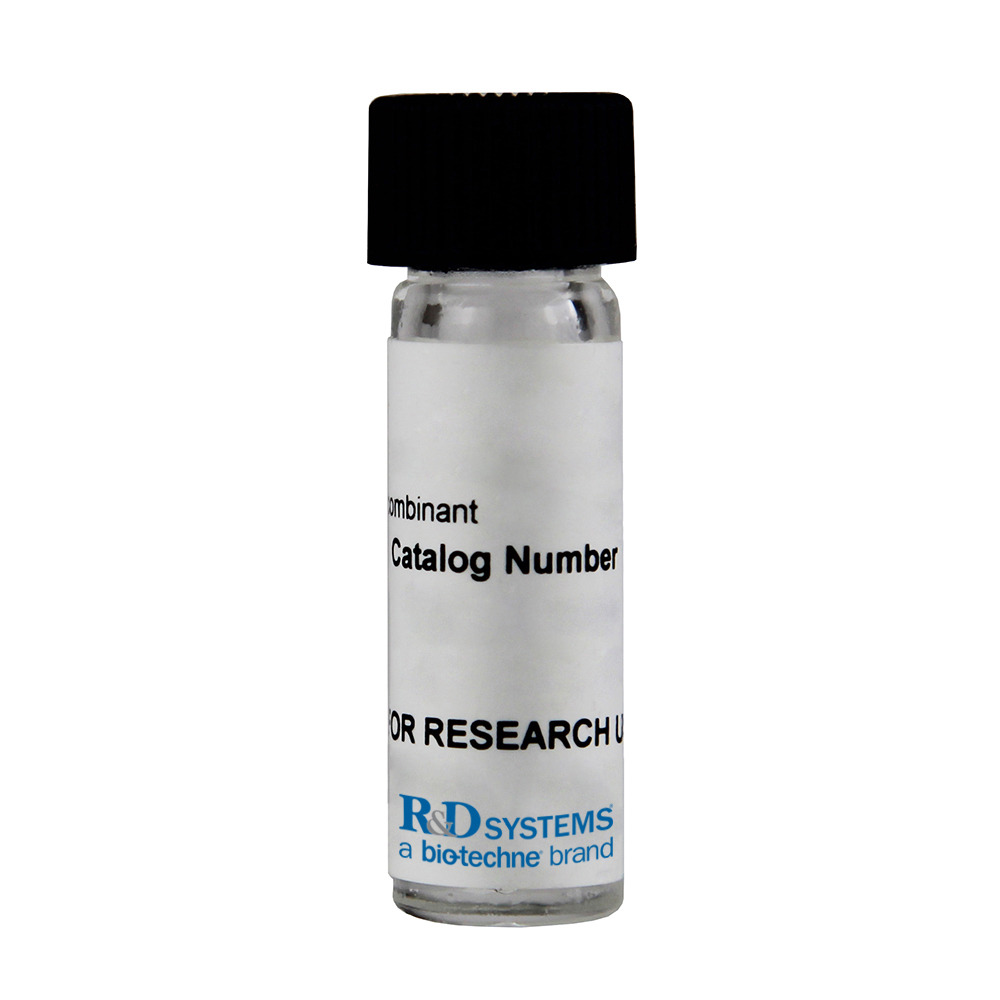 全部商品分类
全部商品分类

 下载产品说明书
下载产品说明书 下载SDS
下载SDS 用小程序,查商品更便捷
用小程序,查商品更便捷


 收藏
收藏
 对比
对比 咨询
咨询Carrier Free
CF stands for Carrier Free (CF). We typically add Bovine Serum Albumin (BSA) as a carrier protein to our recombinant proteins. Adding a carrier protein enhances protein stability, increases shelf-life, and allows the recombinant protein to be stored at a more dilute concentration. The carrier free version does not contain BSA.
In general, we advise purchasing the recombinant protein with BSA for use in cell or tissue culture, or as an ELISA standard. In contrast, the carrier free protein is recommended for applications, in which the presence of BSA could interfere.
9664-CL
| Formulation | Lyophilized from a 0.2 μm filtered solution in PBS. |
| Reconstitution | Reconstitute at 500 μg/mL in PBS. |
| Shipping | The product is shipped at ambient temperature. Upon receipt, store it immediately at the temperature recommended below. |
| Stability & Storage: | Use a manual defrost freezer and avoid repeated freeze-thaw cycles.
|
Recombinant Human CLEC14A Fc Chimera Protein, CF Summary
Product Specifications
| Human CLEC14A (Glu22-Ala397) Accession # Q86T13 | IEGRMD | Human IgG1 (Pro100-Lys330) |
| N-terminus | C-terminus | |
Analysis

Background: CLEC14A
C-type lectin domain family 14 member A (CLEC14A), also known as epidermal growth factor receptor 5 (EGFR-5), is an approximately 52-kDa member of the C-type lectin domain family that plays a role in angiogenic functions including cell-cell adhesion, endothelial cell migration, and tube formation (1, 2). This tumor endothelial marker is a type I transmembrane protein whose extracellular domain (ECD) domain consists of a 141 amino acid (aa) C-type lectin domain, a 43 aa EGF-like domain, and a sushi-like domain (3). Within the ECD, human CLEC14A shares 67% and 68% sequence identity with mouse and rat CLEC14A, respectively.In endothelial cells, CLEC14A forms a complex with VEGFR-3. Failure in the formation of this complex has been observed to result in the enhanced expression and activity of VEGFR-2 and the downstream signaling (4). By its interaction with VEGFR-3, CLECA4 appears to regulate developmental angiogenesis, lymphangiogenesis, and pathological angiogensis (4). CLEC14A acts in vascular homeostasis by fine-tuning VEGF R2 and VEGF R3 signaling in ECs, suggesting its relevance in the pathogenesis of angiogenesis-related human disorders (4).
- Jang, J. et al. (2017) Sci. Rep. 7:10666.
- Mura, M. et al. (2012) Oncogene. 31:293.
- Zelensky, A. and Gready, J. (2005) FEBS. J. 272:6179.
- Lee, S. et al. (2017) J. Clin. Invest. 127:457.





